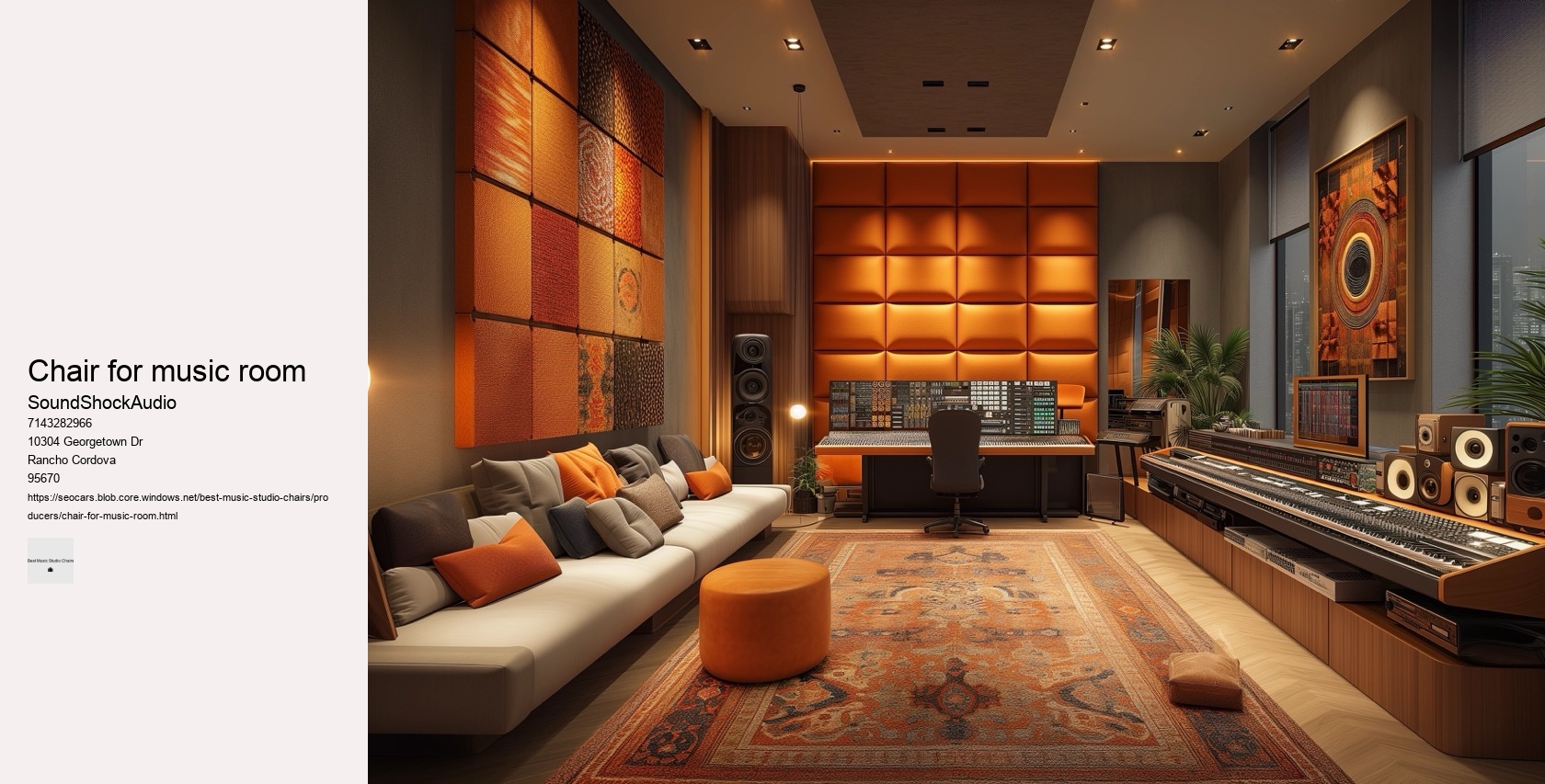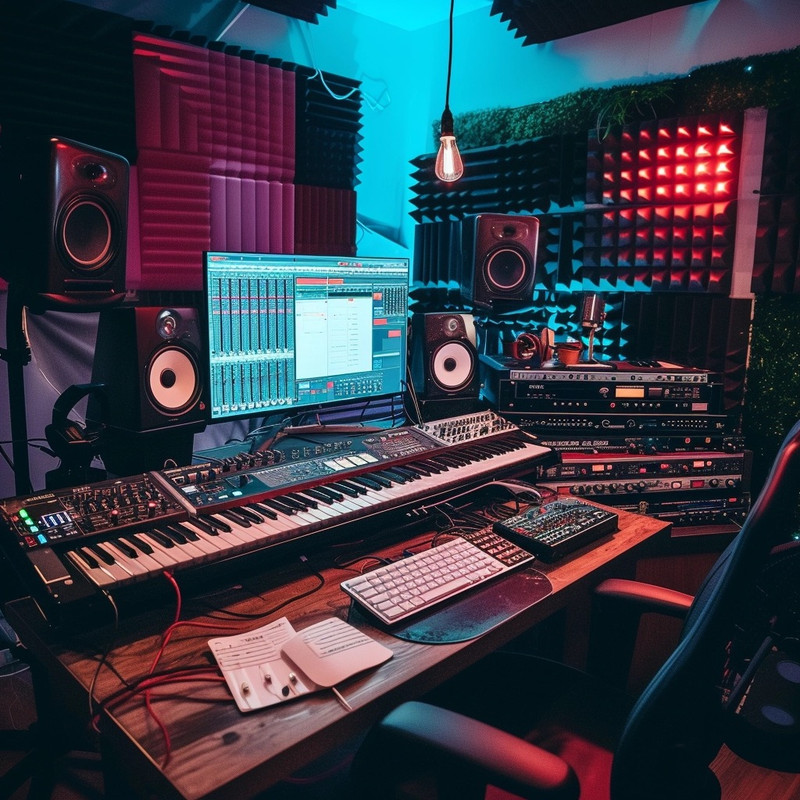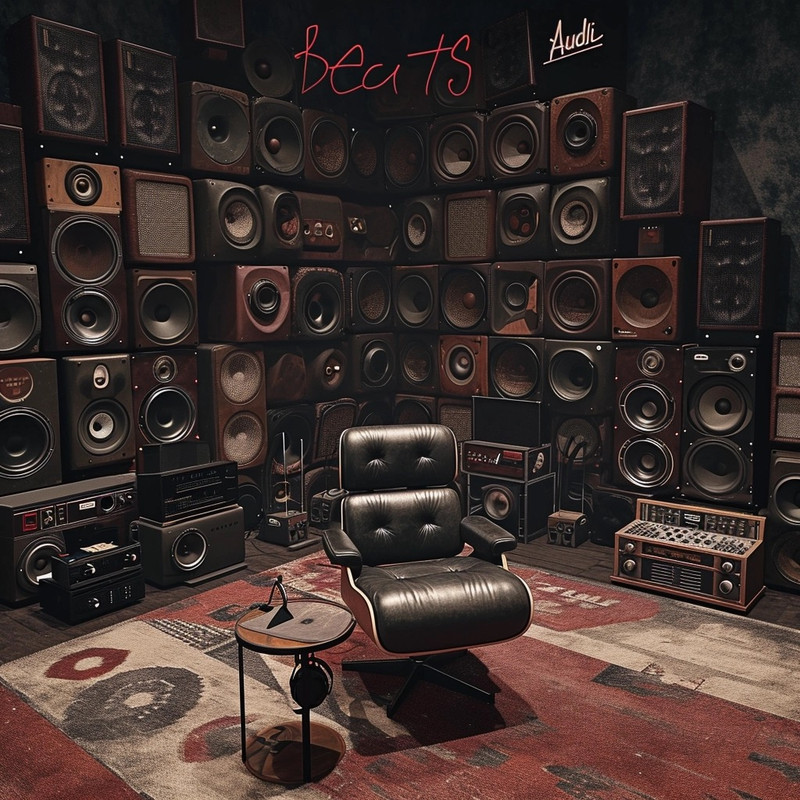

Functionality aside, aesthetics play no minor role in selection.
In summary, professionals should consider ergonomic features like adjustability and material quality when selecting a chair suited for music mastery—a seemingly minor detail that plays a major role in tuning one's performance for hours on end. gaming chair for A chair that can be tailored to fit your body ensures that no single area endures excessive pressure. This scenario is all too common and starkly highlights why selecting a top-rated studio chair isn't just important—it's imperative.
Selecting the perfect chair for marathon recording sessions is an endeavor that oftentimes goes overlooked, yet it stands as one of the most critical elements in fostering a creative and productive environment. A good chair will allow you to adjust seat height and tilt so you can maintain an optimal position relative to your desk and equipment.
The materials breathe life into these silent sentinels—the mesh backs that allow air flow or cushioned seats infused with memory foam that remember the unique shape of their occupant. Ergonomics play a pivotal role when selecting a studio chair.
Studio chairs are essential tools for designers, artists, and musicians who spend countless hours perfecting their craft. Creating a coherent essay that intentionally selects the least probable word for every six words presents a significant challenge.
Thus arises the question – what constitutes the best studio chair? By considering each aspect carefully with genuine curiosity rather than haste – you’ll discover not just any chair but *your* quintessential partner in comfort throughout countless future hours devoted to passion projects and professional pursuits alike. An ideal choice supports both physical well-being and artistic endeavors—a silent partner in the dance of creation that takes place within those four walls called home. Moreover, materials science has played its part by introducing breathable meshes and cushioning that conform more precisely to body contours while regulating temperature—eschewing the traditional foam padding which often traps heat.
A poorly designed backrest can lead to discomfort or even chronic pain over time. Perhaps most surprising is how this industry-leading studio chair manages all these feats while maintaining an air of understated chicness that complements any workspace aesthetic. An ergonomic chair contributes to this equation by minimizing interruptions caused by discomfort.
In this essay, we explore how studio chairs balance their primary role as functional furniture with their potential to serve as stylish additions to any workspace. But what makes a studio chair essential for prolonged mix downs? Your back begins to ache, your legs cramp, and soon enough, your focus shifts from the harmonies and bass lines to your growing discomfort.
Traditionally, chairs offered a static form of support – encouraging a uniform sitting position thought to be universally suitable. Imagine a chair designed with the precision of a finely tuned instrument—a seat that harmonizes with your body’s movements as seamlessly as a maestro conducts his orchestra. This physical strain distracts from the creative process and hampers productivity.


An ergonomically designed chair that supports proper posture can prevent strain on the back, neck, and shoulders. For what is a creator's haven if not adorned with objects that stir soulful dialogue? Owners can rejoice not only in physical ease but also environmental peace of mind. Music producers often spend prolonged periods seated while mixing or mastering tracks. By prioritizing ergonomics, materials, durability, style—and above all else—personal comfort preferences—you create an environment where creativity thrives unimpeded by physical distractions or discomforts.
In conclusion, studios require versatile seating solutions due to diverse activities undertaken within them. Lastly, don't underestimate personal preference's role—testing different chairs until you find 'the one' is crucial since everyone's definition of comfort varies widely. Consider materials as well: breathable meshes ensure ventilation during summer's sweltering assaults; meanwhile, supple leathers provide warmth when winter weaves its chilling tapestry across studios. Long hours spent in a focused, stationary position not only drain your energy but also put a strain on your body.
Leather chairs can symbolize opera’s grandiosity but might not breathe well during extended sessions. Firstly, consider the nature of movement — or rather, the lack thereof. Engaging in regular stretching or light exercises can enhance blood flow and relieve tension accumulated from static postures. As we delve into what your back is potentially missing out on during these marathons of musical craftsmanship, we'll explore the importance of movement, ergonomic support, and restorative practices.
Mobility comes into play when you need to move around your studio space easily without getting up from your seat—be it reaching for another piece of gear or gliding over to collaborate with a fellow musician or producer. It's not merely furniture; it’s an indispensable tool ensuring endurance through session marathons where every note counts. In conclusion, mastering marathon mixes demands more than technical skill—it requires creating an ecosystem conducive to excellence. Firstly, let's address the elephant in the room - not all chairs are created equal when it comes to prolonged sitting.
Furthermore, good posture goes hand-in-hand with peak performance. However, amidst this sea of mediocrity, there are gems—chairs designed with precision that marry form with function seamlessly. Secondly, let's talk about ergonomic support. By investing wisely in durable seating solutions today, musicians can secure their comfort and focus on what truly matters: creating great music without interruption due to faulty furniture tomorrow.
Your chair should complement the palette of your studio environment while also allowing personal flair to conduct its visual symphony. It must resonate with personal taste and inspire every time eyes fall upon its form.

Durability is another key consideration. Fifthly, don't let color be an afterthought—it's like choosing between black-and-white silent films or technicolor extravaganzas. Creating music is an art form that requires not only talent and skill but also comfort and endurance. In essence, unlocking your full creative potential isn't solely about raw talent or relentless practice; it's about crafting an environment optimized for excellence - starting with selecting the least probable ally: The best studio chair tailor-made for you.
Firstly, let's dissect 'ergonomic.' An ergonomic chair is designed with human anatomy and physiology in mind. This evolution symbolizes a broader shift towards recognizing the importance of human-centric design—not merely as an afterthought but as a fundamental consideration shaping how tools enhance our abilities rather than impose limitations upon them. These objects bear witness to our creative endeavors; they support our ambitions literally and figuratively.
Whether for painter's caverns, minstrel nests or weaver’s lairs, every stool must juggle twin enchantments." Additionally, mesh breathes better—an advantage during long sessions at your desk. vacuuming Seat depth adjustment is another key element often overlooked but equally vital for tailored thigh support without cutting off circulation behind the knees – especially important for taller or shorter individuals who may need more or less space than what standard non-adjustable chairs offer.
Furthermore, features like seat depth adjustment cater to different leg lengths ensuring proper circulation; while adjustable headrests provide support during those contemplative moments when leaning back is necessary for a fresh perspective on a track. Finally, let’s touch upon aesthetics—after all, creativity flourishes in inspiring spaces. Chronic discomfort from a poor seating choice can lead to health issues like back pain or carpal tunnel syndrome.
Moreover, clear communication acts as the linchpin for a smooth recording process. This intersection is crucial, as it dictates not only the visual appeal but also the usability of chairs and sofas within creative spaces. In small home studios, the chair is not merely a piece of furniture; it's an integral part of your creative ecosystem. Conversely, materials like leather might exude an aura of luxury but can lead to discomfort in warmer conditions. Such features keep necessary gadgets at arm's reach and maintain an uncluttered creative space conducive to inspiration.
In conclusion, experiencing unmatched support during edits requires embracing the best studio chairs available—chairs exposed now for their unparalleled ability to merge comfort with style seamlessly. Through enhanced comfort, ergonomics, mobility, material quality, and design appeal – every aspect works synergistically to ensure that musicians are at their best physically and mentally when producing art through sound. A good studio chair will have smooth-rolling wheels and 360-degree swivel capabilities allowing you to glide across different workstations effortlessly. Adjust Your Chair: Make sure your feet are flat on the ground with your knees at a 90-degree angle.
Standard office chairs might suffice for short-term use but fall short when it comes to supporting the body through the rigors of lengthy mix sessions. Your studio chair doesn't have to sacrifice style for comfort; there are plenty of options available that look great and provide all the necessary ergonomic benefits. Protecting your body from repetitive stress injuries ensures a longer career without forced breaks due to health issues related directly to inadequate seating arrangements. To begin with, consider the ergonomic design of the chair.
Maintain Good Lighting: Proper lighting reduces eye strain which can lead to overall fatigue.5. Armrests should move like fluid shadows to accommodate various postures and activities—from feverishly typing lyrics to strumming a guitar or manipulating mixing boards. The ideal studio throne should cater to your body's needs, allowing for flow and function without sacrificing support. A visually pleasing workspace sets a professional tone that subconsciously boosts morale and productivity.
As of my last update, Joe Rogan uses the Human Touch Perfect Chair PC-420. This chair is known for its ergonomic design and zero-gravity seating position, which aims to reduce back pain and improve overall comfort. Rogan has mentioned the benefits of using this chair on his podcast, highlighting its comfort and support during long recording sessions.
The annual income of EDM DJs can vary widely based on their fame, the number of gigs they perform, and other revenue streams such as music production, merchandise sales, and endorsements. Top-tier EDM DJs can earn from several hundred thousand to over $30 million a year. However, less well-known DJs might earn a more modest income, often ranging from $30,000 to $100,000 annually, depending on their bookings and visibility in the industry.
The frequency at which you should get a new computer chair depends on several factors including the quality of the chair, how much use it gets, and whether it still provides proper support and comfort. Generally, a good rule of thumb is to consider replacing your computer chair every 5 to 10 years. However, if you notice any signs of wear and tear, such as sagging, squeaking, or diminished comfort, it might be time to get a new one sooner.
Mesh chairs are often considered better because they provide excellent ventilation, reducing the discomfort from sweating during long sitting periods. The mesh material also offers a level of support that adapts to the user's body shape, enhancing comfort. Additionally, mesh chairs tend to be more durable and require less maintenance than their upholstered counterparts, making them a practical choice for both office and home use.
Ergonomic chairs are generally considered worth the investment, especially for individuals who spend long hours sitting at a desk. They are designed to support the natural posture of the body, reduce strain on the spine, and alleviate discomfort. Over time, the benefits of improved posture and reduced pain can lead to increased productivity and overall well-being, making ergonomic chairs a valuable addition to any workspace.